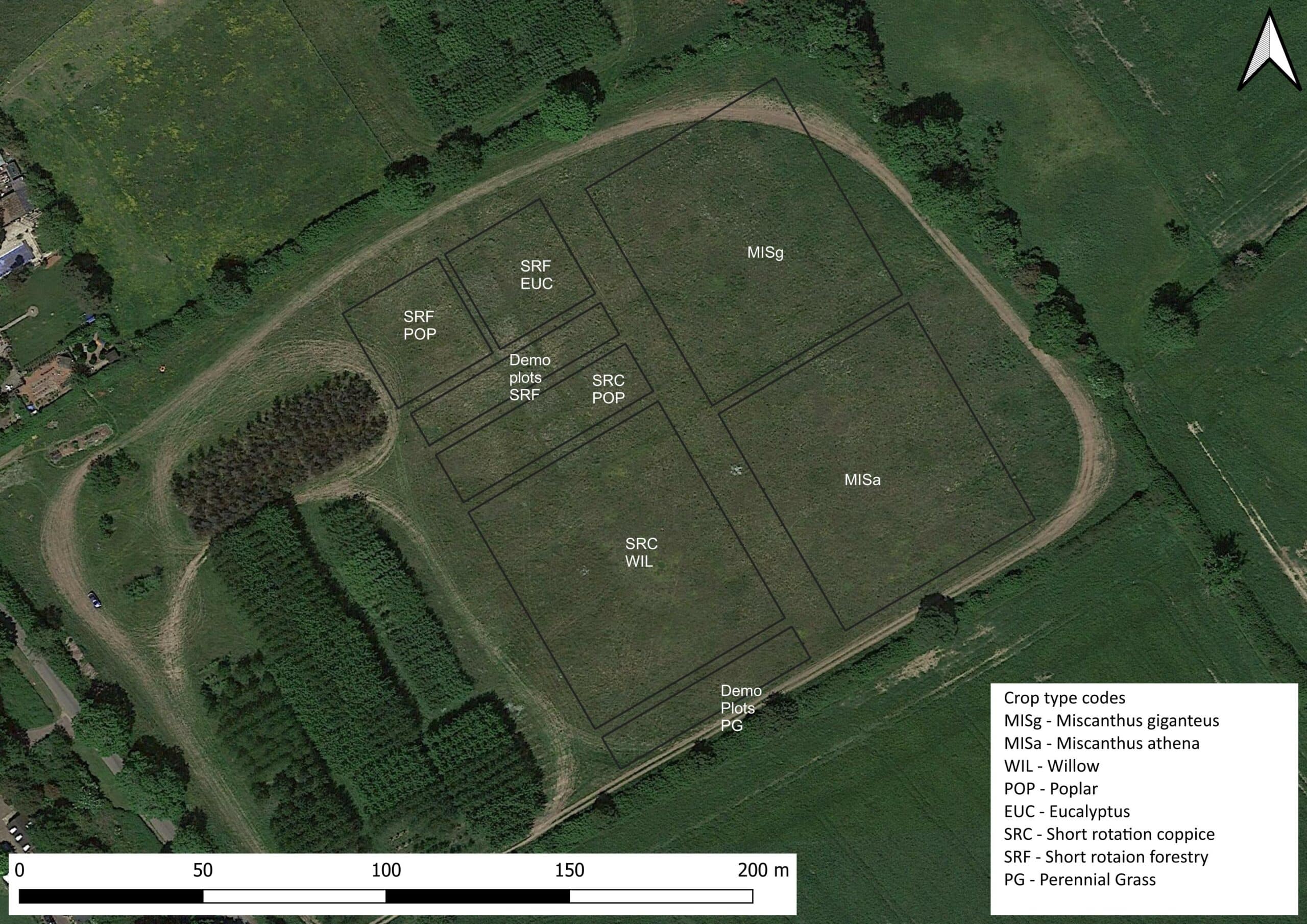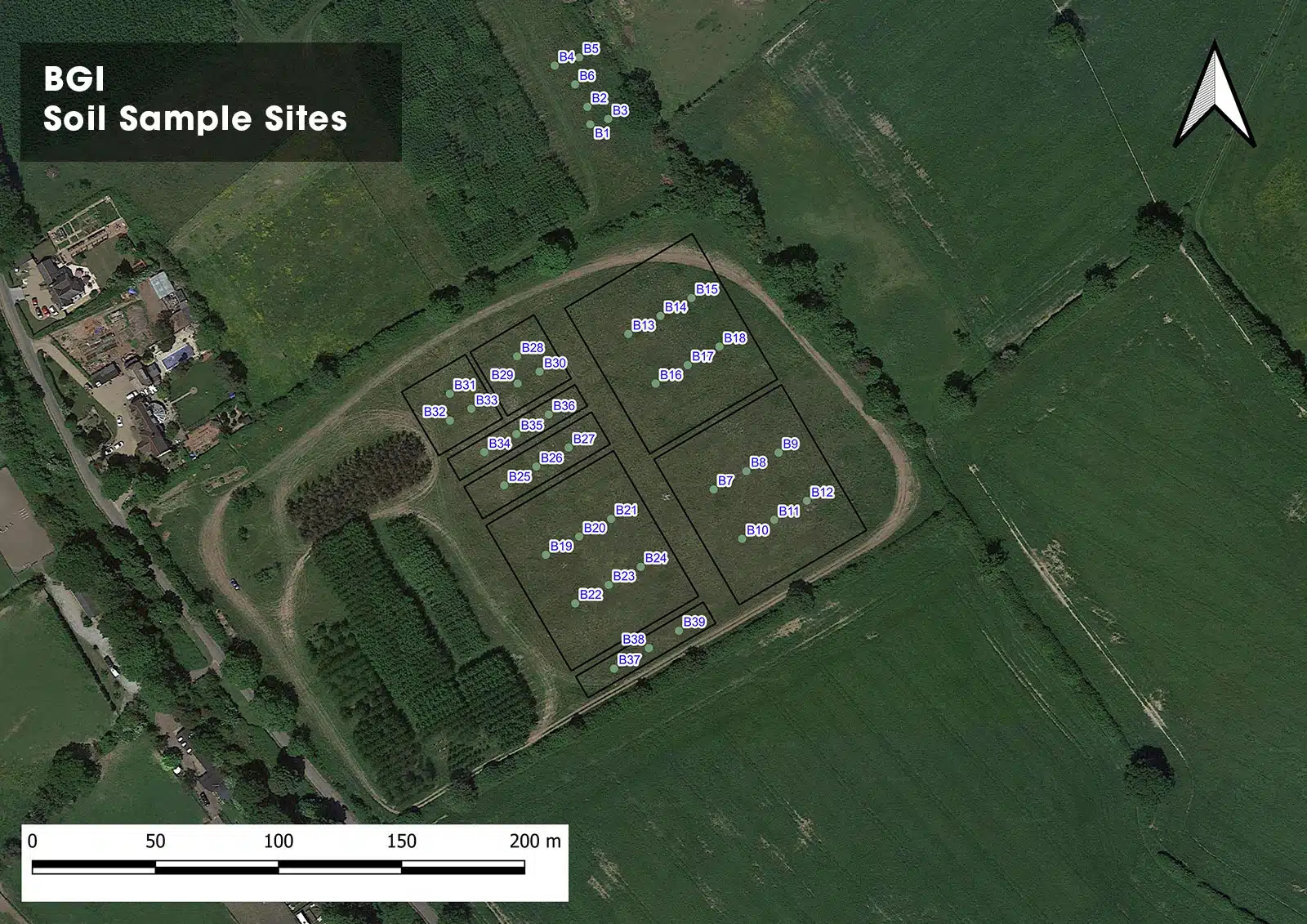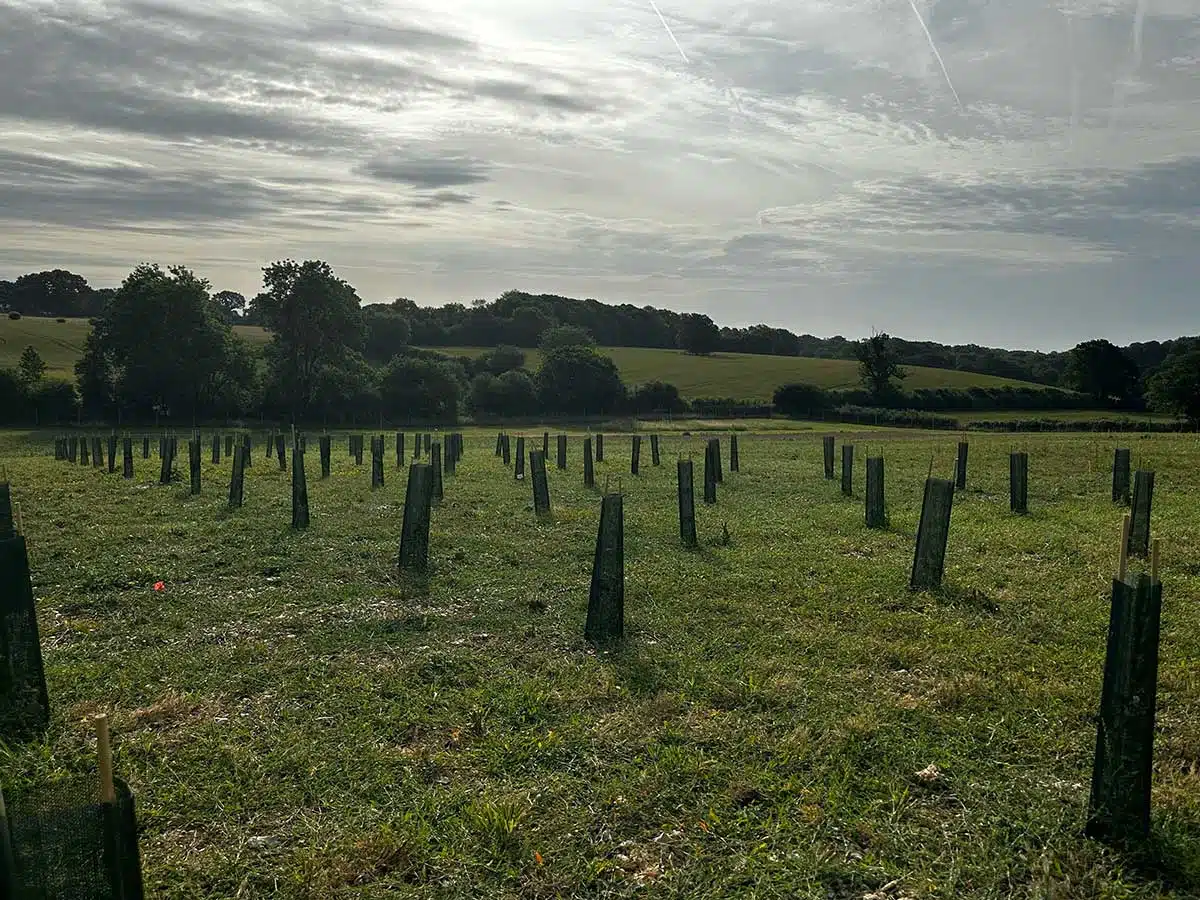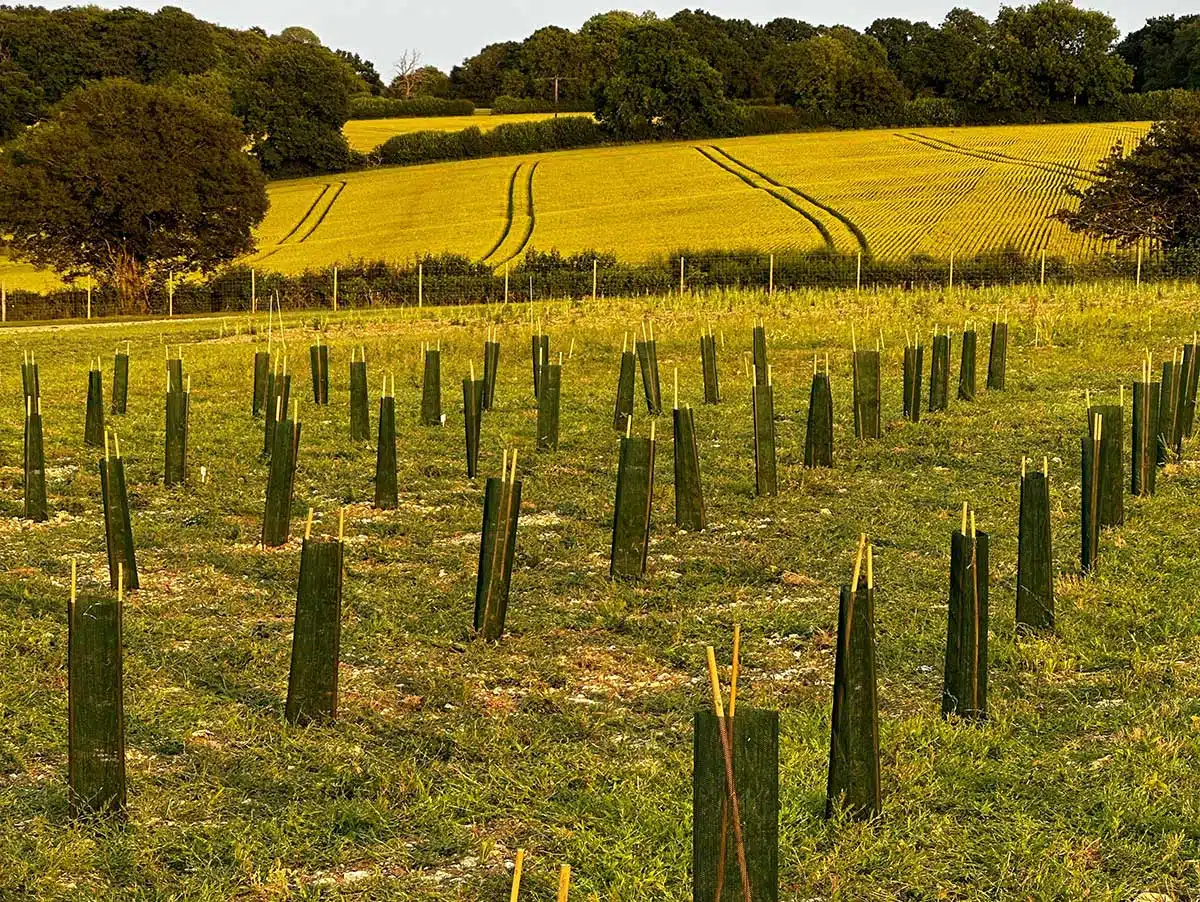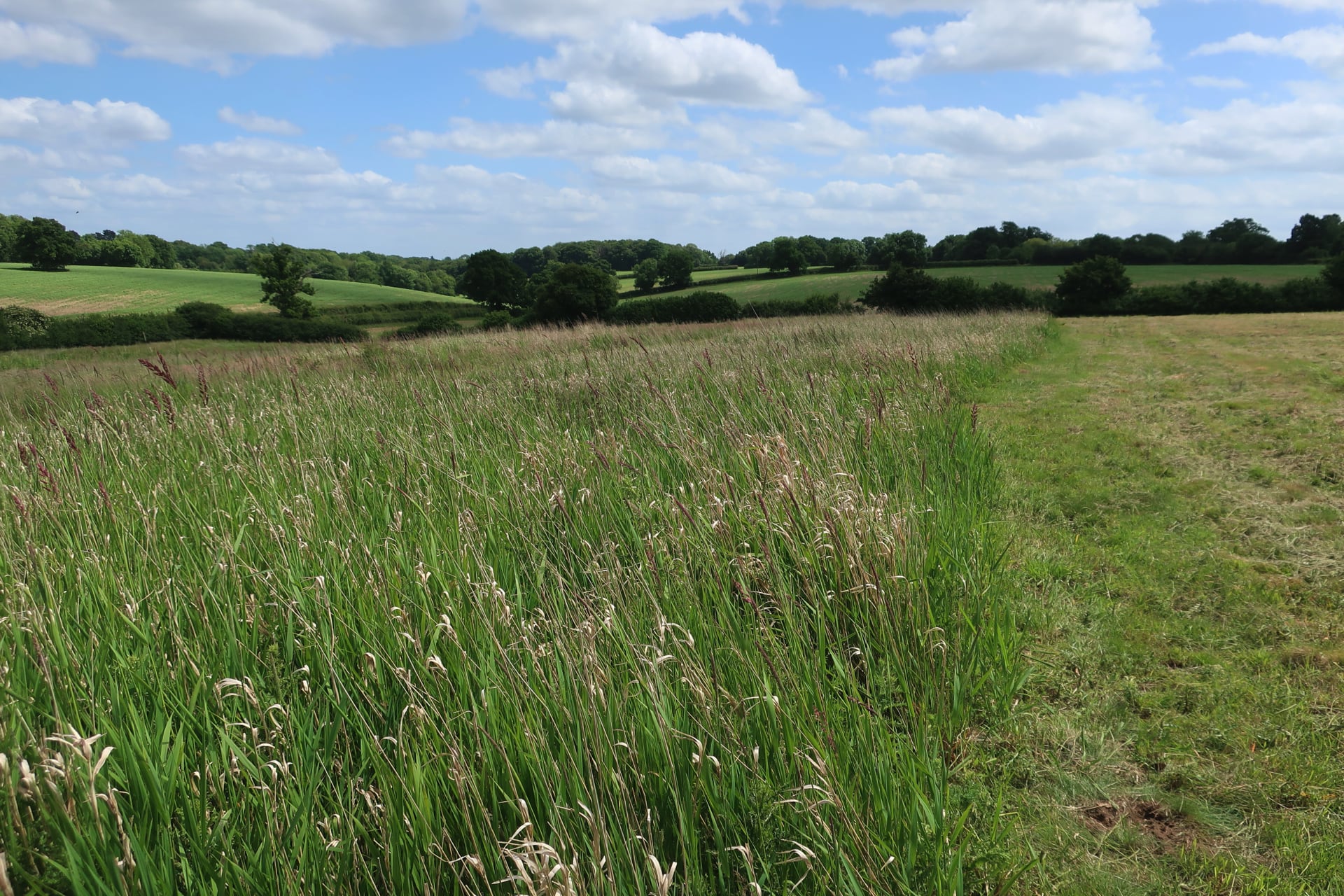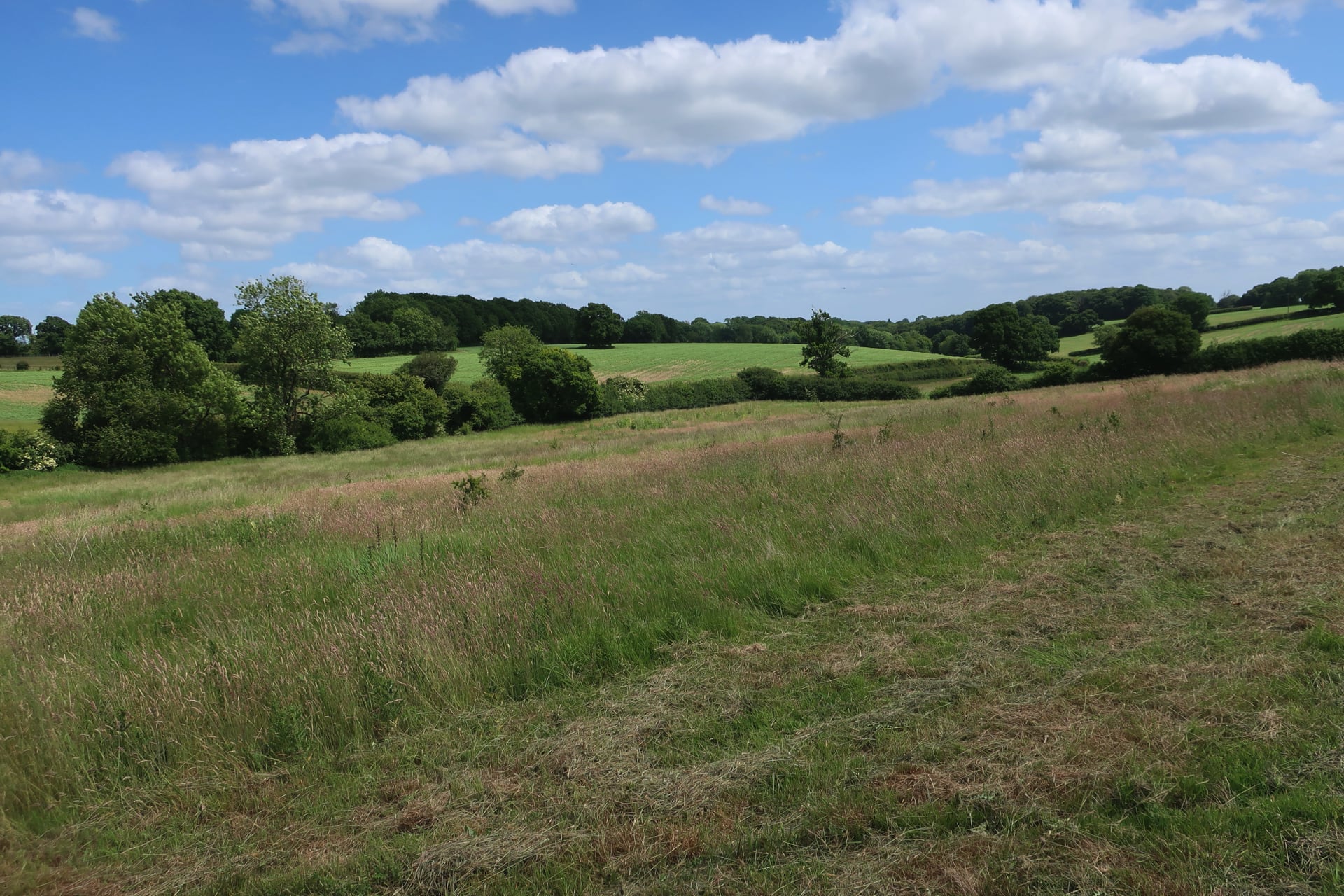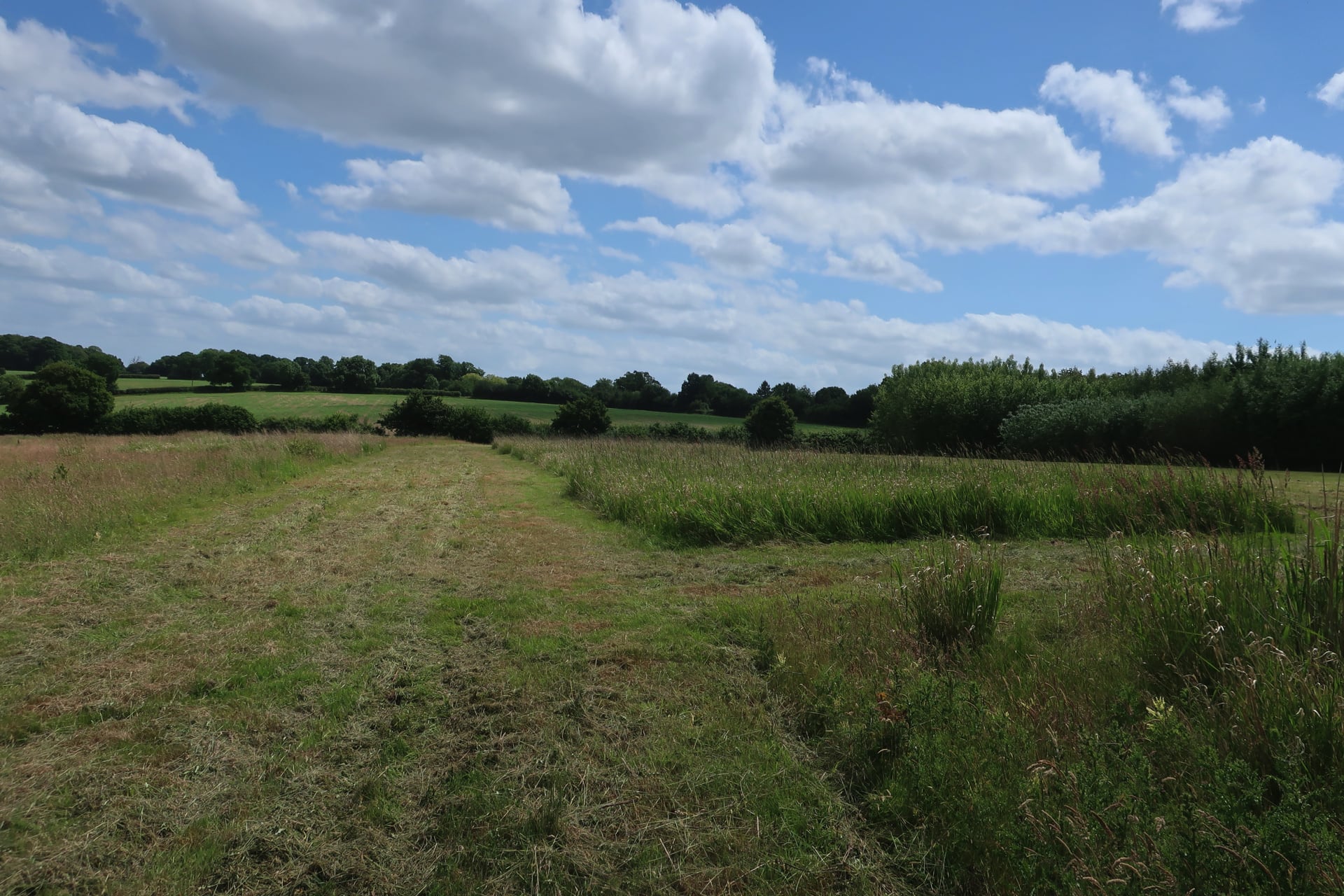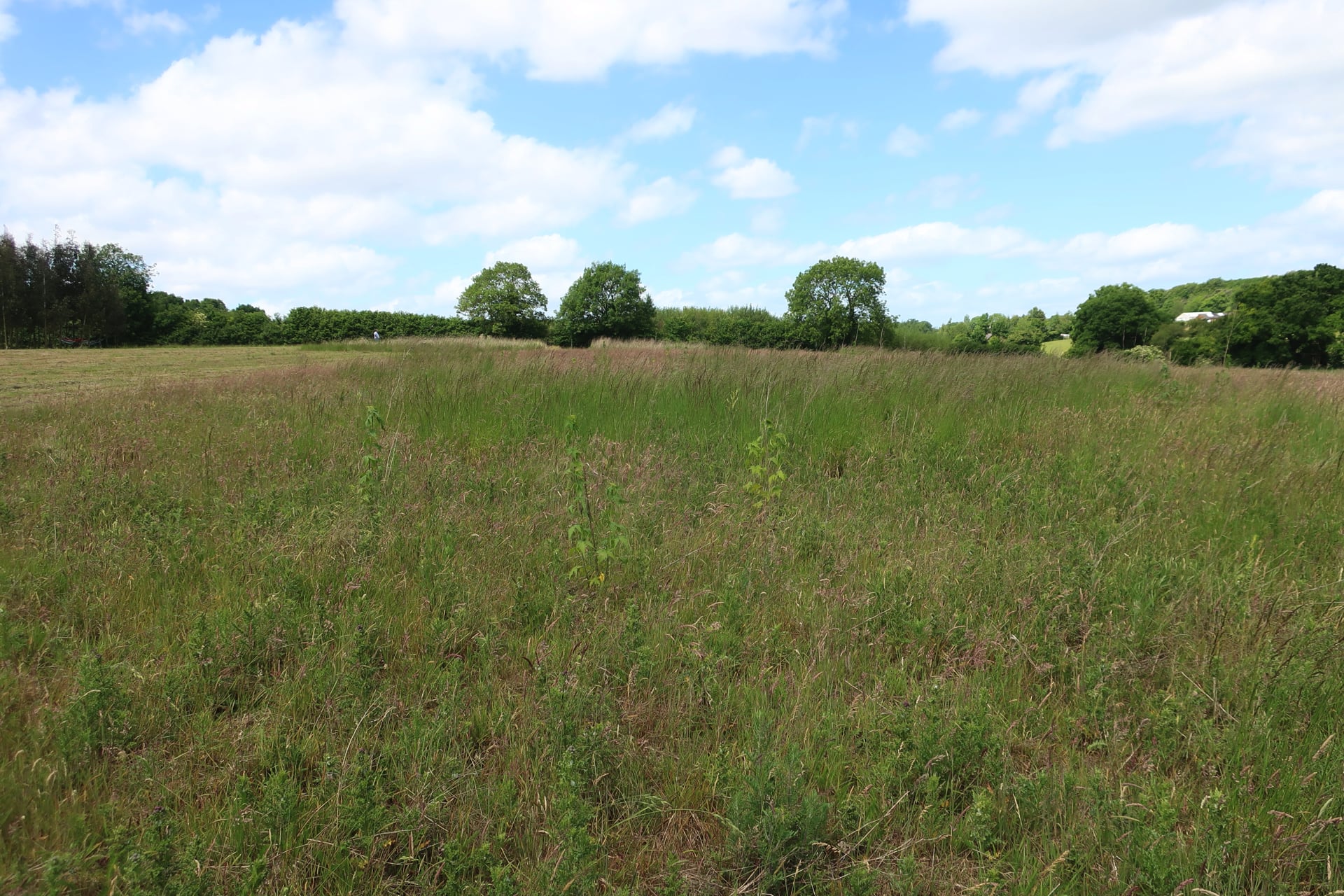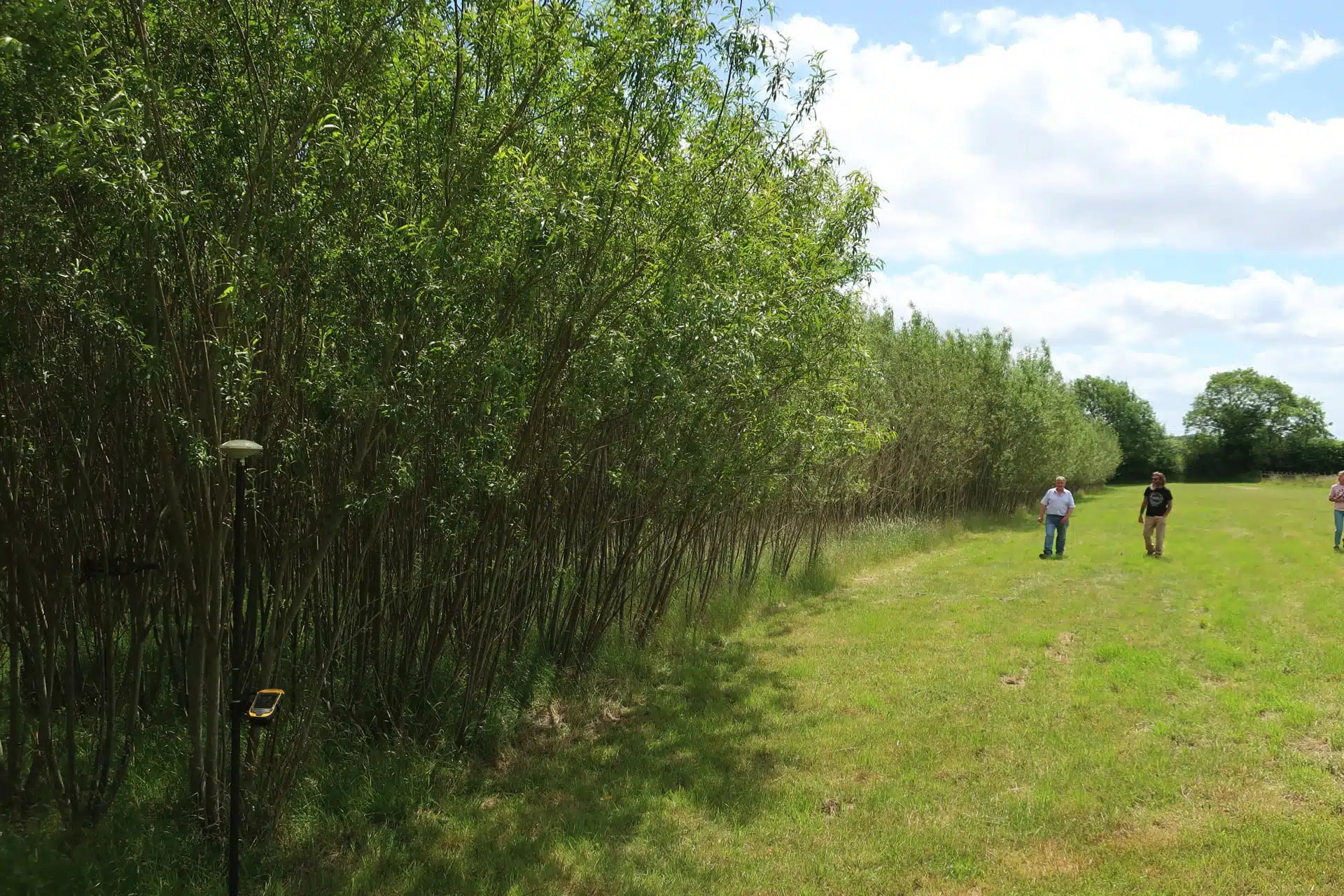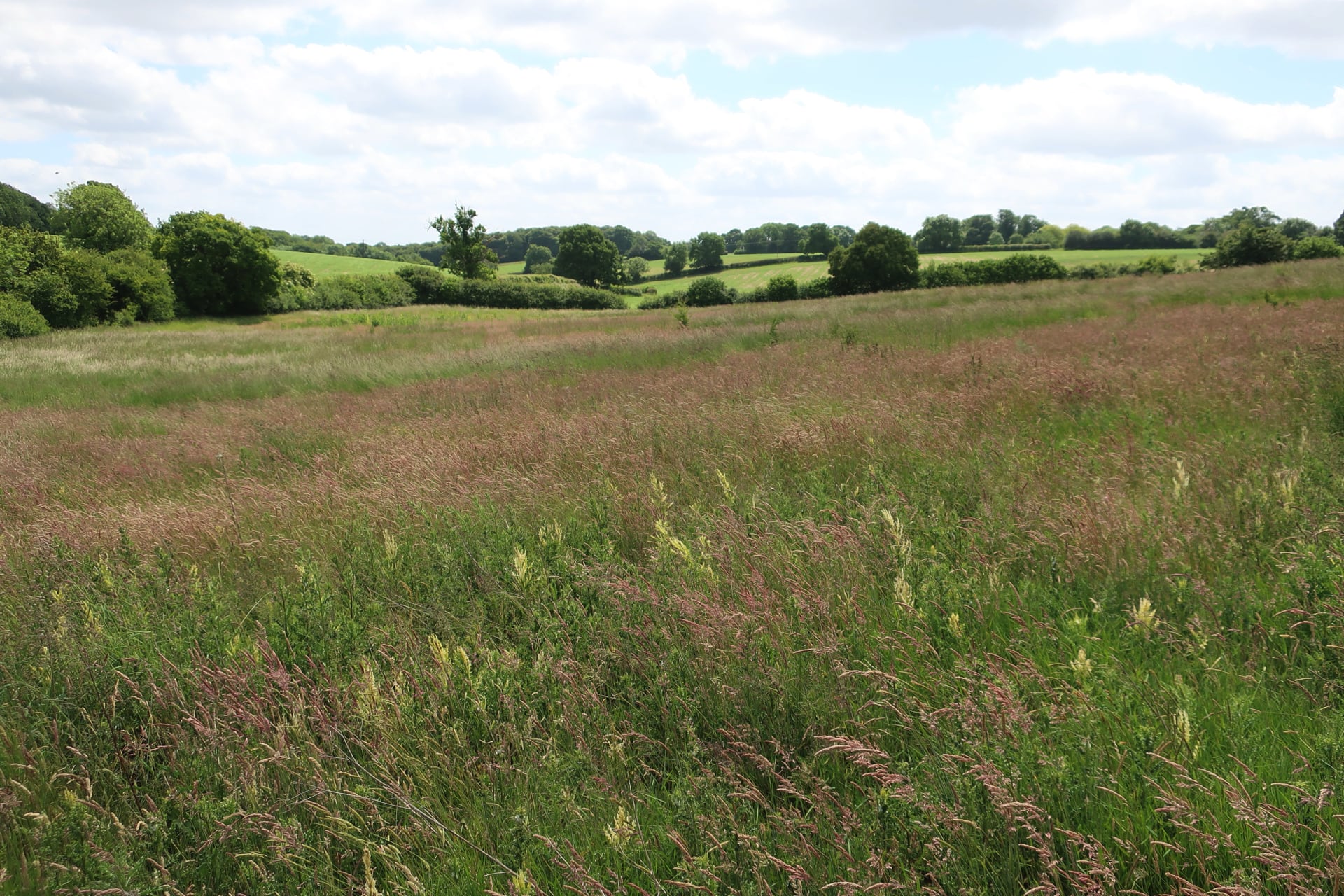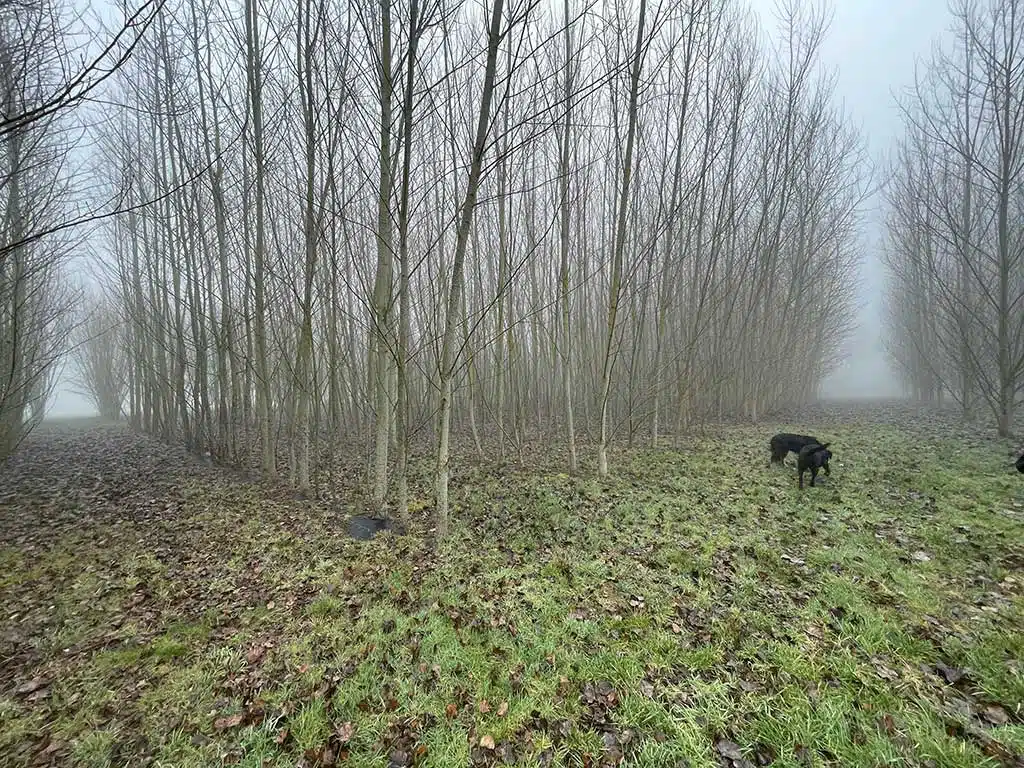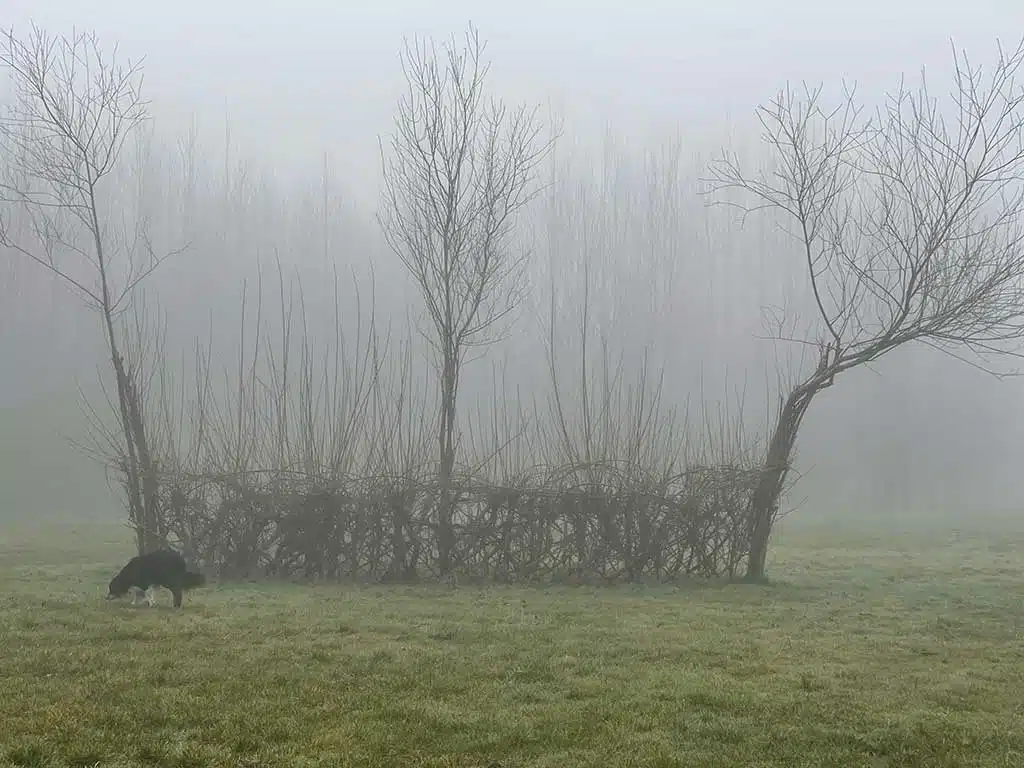Chesham, Buckinghamshire (BGI)
Flat or sloping fields situated 178 metres (583 feet) above sea level. Clay loam and flint soil. Existing 10-year old grown plantation of many species of willow, poplar and eucalyptus. Crops planted during spring 2023 include SRC willow, SRC and SRF poplar, Miscanthus, black locust, Eucalyptus and perennial grasses. Miscanthus Athena™, reed canary grass, sida, Silphium and switchgrass were all planted in 2024. Updates on the progress and performance of these crops can be found below and in the news section.
|
Address |
Hunters Oak, Asheridge, Chesham, Bucks, HP5 2UU. |
|
Latitude, longitude |
51°44′18″N , 000°39′06″W |
|
Grid ref |
SP932052 |
|
What 3 words ref entrance |
///meanings.relatives.tripled |
Characteristics
| Mean Annual Precipitation (mm) | Unknown. |
| Mean Annual Temperature (°C) | Unknown. |
| Altitude | 178 metres (583 feet). |
| Exposure | |
| Topography | Flat or sloping. |
| Aspect | |
| Soil type | Clay loam and flint. |
| Previous vegetation coverage | Newly prepared area ready for planting Biomass Connect. (Other area is 10yr old grown plantation of many species of Willow, Poplar and Eucalyptus). |
| Other relevant site info |
Weather Data – Recorded On Site
The weather data presented here are direct from the sensors on the weather station. The data have not been checked and may be inaccurate and reprocessed in the future. Gaps may appear in the data due to issues such as failed sensors, corrupted data-logger programs and low power system voltages at the weather stations. The Biomass Connect project assumes no responsibility for the data presented or for any loss which may arise (directly or indirectly) from reliance on the data.
Weather Data – Recorded On Site
The weather data presented here are direct from the sensors on the weather station. The data have not been checked and may be inaccurate and reprocessed in the future. Gaps may appear in the data due to issues such as failed sensors, corrupted data-logger programs and low power system voltages at the weather stations. The Biomass Connect project assumes no responsibility for the data presented or for any loss which may arise (directly or indirectly) from reliance on the data.
Project plans/actions
| Which biomass crops |
Planted (as of October 2024)
|
| Planting goals/aim | As above |
| Agronomic dates (planting, harvesting schedule) | Planting target date late-March – mid-April 2023. Important so the crop can establish before the risk of drought. |
| Management methodology (spray off, nutrient additions, ploughing, site prep, others) |
Spot treat any perennial weed issues from late spring 2022. Soil sampling, adjusting pH, P and K indices if needed. Subsoil site. Glyphosate applied at 3-5l/ha 2 – 3 weeks prior cultivation to grass in late August / early September. Plough and till and drill winter wheat. Or establish hemp/arable rotation in the hemp area. Glyphosate applied at 3-5l/ha in spring 2023 2 – 3 weeks prior planting to kill off the autumn sown cereal and any other weeds that have emerged during this period. Planting target date late-March – mid-April. Important so the crop can establish before the risk of drought. Depth of ploughing ~23 cm and dates when this work should be carried out. Willow area within 1 week post planting, pre-emergent residual herbicides to be applied. These are important to keep the crop clean during the establishment phase. A mixture of pendimethalin (e.g. Stomp at 3.3 l/ha) and Isoxaben (e.g. Flexidor at 0.5l/ha) is effective. Avoid tank mixing as the chemicals may not be compatible. There is vertebrate grazing pressure at the site, an electric fence will be erected until the treatments during establishment are complete, then a hard stand rabbit fence will be built around the trials. Miscanthus spray 1.5 l/ha Stomp at pre-em stage The electric fence line will be sprayed with glyphosate to ensure weed vegetation does not short it out. The fence will be inspected for efficacy during the regular monitoring (weekly from planting – July) of the trial during the establishment phase. The trials should be monitored during the first year and any weed flushes should be controlled either mechanically or with herbicide treatments. Grass problems can be dealt with by a graminicide options include: Fluazifop-p-butyl (e.g. Fusilade at 1.5l/ha), cycloxidim (e.g. Laser at 2.5l/ha with oil) or propaquizafop (e.g. Falcon 1.4l/ha) in tree species. These should be avoided in Miscanthus / grass species. Two applications of Dow Shield work well at controlling youngish thistles. First application at 0.25 litre/ha. Then a second application 3 weeks later at 0.5 litre/ha. Shield applications should be avoided on hot days (+~25oC) in willow. The project agronomist will provide help and advice, but interrow spraying and moving / strimming may need to be done 3 times in the planting season. The 5 sections of the hemp arable rotation area will need to be planted and cultivated as per the arable rotation. |
| Machinery to be used |
Ride on Lawn mower – cutting grass. Quad Bike for applying spot weeding glysophate. Sub-Contractor with Tractor for ploughing, applying glysophate, subsoil, power harrow and planting seed. Note: Currently requesting Hyundai Heavy Duty Self Propelled Petrol Wheeled Grass Trimmer £1k, Masser digital callipers, Masser Racal II BT (£2k for measurements), Secateurs, loppers etc. |
General Info
|
Field management history |
Over the last 8 years growing over 40 species of Willow, Poplar, Eucalyptus, Sida, etc. Currently using some willow for chipping and heating, also to clear corridors for Biomass Connect innovative machinery for testing/demonstrations for harvesting willow. Areas designated to Biomass Connect are currently being prepared for planting, as above. |
|
Other site detail of note |
Working with Will MacAlpine, Rothamsted for field management for Biomass Connect. |
